View Menu
View
The View menu contains a number of different options for viewing data from Boreas.

Manager View Menu
Device Information
Device information is useful during technical support and for tracking your serial number, firmware and hardware version.
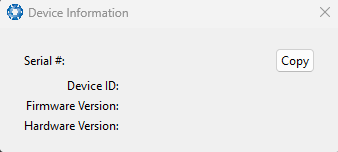
Manager Device Information
Status
The Status shows the current status of Boreas as reported by sections System State Packet (ID#20) .
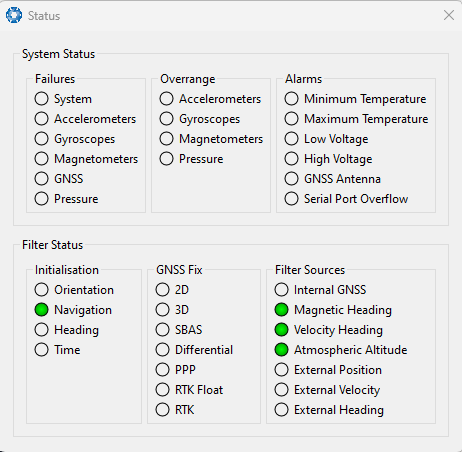
Manager Status Dialogue
Satellites
Note: Boreas AHRS variants can be used as an INS with velocity and position. It can also be interfaced to any leading brand of GNSS receivers to create an OEM GNSS/INS solution.
The information is displayed as a satellite skyplot, a table and an SNR (Signal-to-Noise Ratio) graph. A maximum of 28 satellites will be displayed, even if more are accessible. This plot shows the SNR of each satellite at the primary and secondary antenna. As a guideline, these should be within 5-10 dB of each other in the absence of cable or antenna faults. Elevation and azimuth are in units of degrees.

Manager Satellites Table
Raw Sensors
Raw sensors shows the
Temperature readings are available for a range of sensors: T(Ax), T(Ay), and T(Az) correspond to the accelerometer's x, y, and z axes; T(Gx), T(Gy), and T(Gz) relate to the gyroscope's X, Y, and Z axes; T(M) is for the magnetometer; and T(P) reports temperature of the pressure sensor.
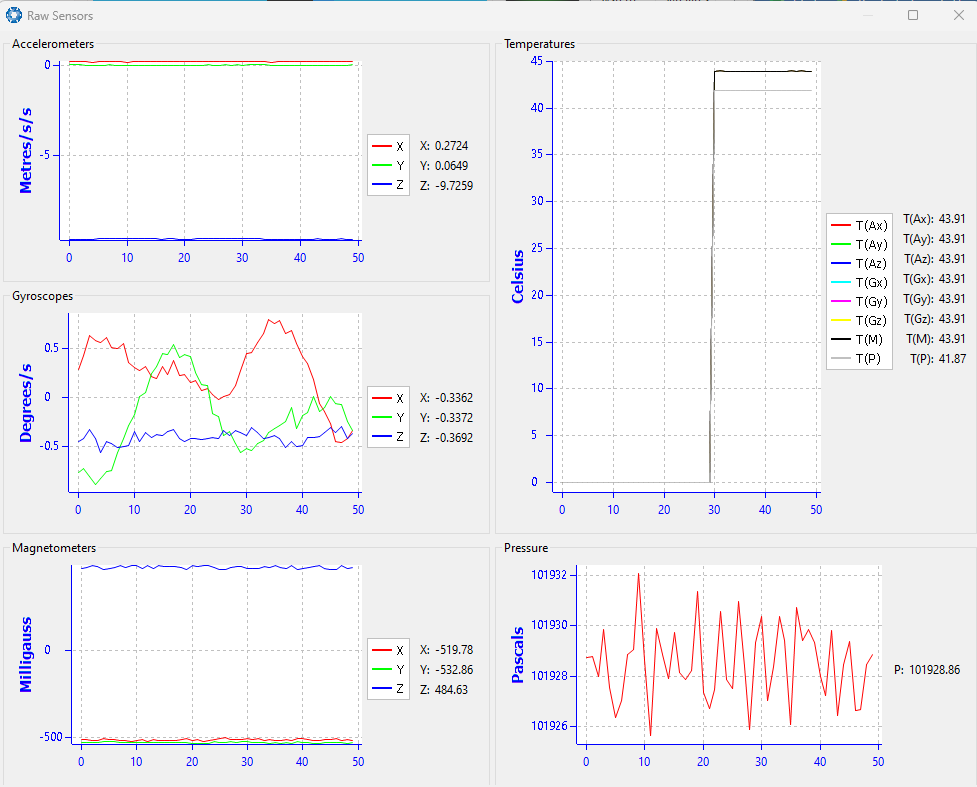
Manager Raw Sensor Outputs
Orientation
Orientation shows the Boreas orientation, angular velocity and orientation error. To enhance the user's understanding of some of the less intuitive metrics, Course is defined as the path determined by measuring sequential positions, and Slip is the difference between the heading and the course.
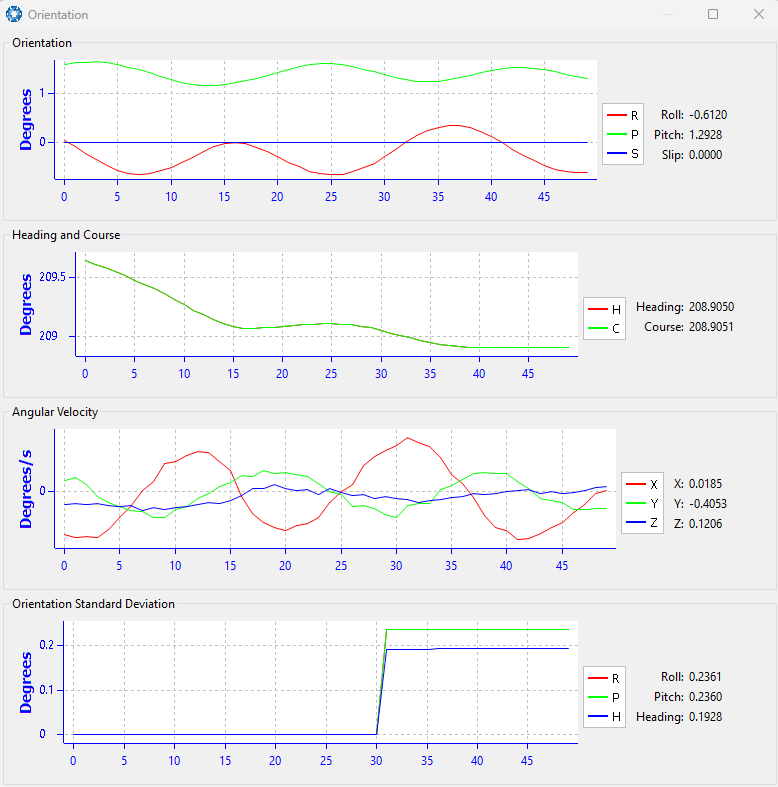
Manager Orientation Outputs
Position
Position shows the Boreas position and position error. Latitude and longitude are converted to North and East metres from a reference point that can be reset.
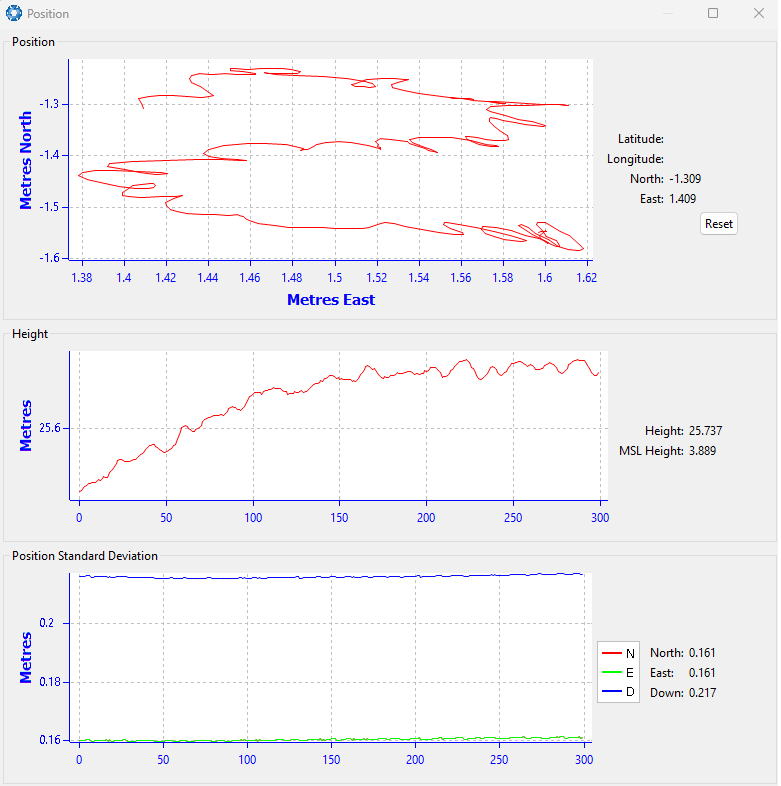
Manager Position Outputs
Velocity and Acceleration
Velocity and Acceleration shows the Boreas velocity, acceleration and g-force.
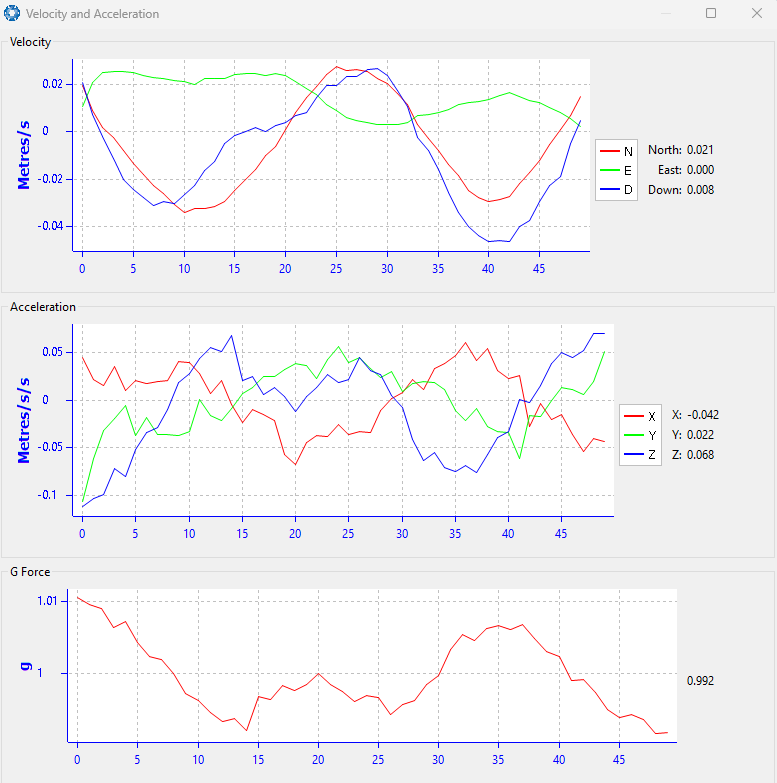
Manager Velocity and Acceleration Outputs
Time
This dialogue box allows the to view the time for the connected device. Views are in Unix, UTC, or Local time formats to best suit user requirements to ensure accurate timekeeping and synchronisation across systems.
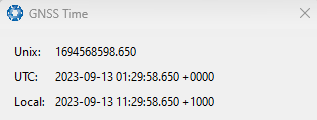
Time Dialogue
Communications
This dialogue shows statistics on the data packets received from Boreas and can be useful in diagnosing signal integrity problems.
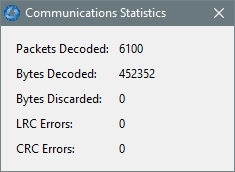
Manager Communications Dialogue
Vessel Motion
For the Vessel Motion dialogue to display vessel motion data, the Vessel Motion Packet (ID 89) must be configured in the Packet Rates dialog. Reference point offsets for heave are configured in the Reference Position Offsets dialog.
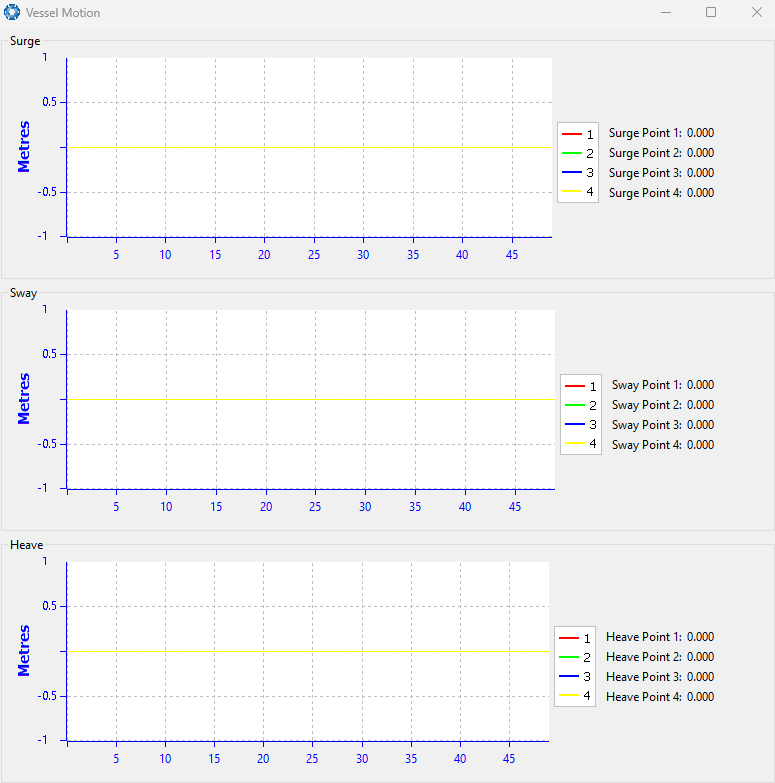
Manager Vessel Motion Outputs
North Seeking Status
Coarse Alignment is used to derive the heading based on a gyrocompass' estimation of true North. For more information, see . Coarse alignment is necessary to establish an approximate heading when a dual antenna GNSS heading or alternate source is unavailable, such as in a GNSS denied environment. Once coarse alignment is complete, a heading is established, after which the gyrocompass will be used for fine alignment.
The Coarse Heading Alignment page displays the current status of the initialisation process. Given below is a list statuses and warnings that may be displayed during this process:
| Status Messages | Description |
|---|---|
| Awaiting position via GNSS or manual initialisation | An approximate position is required to complete coarse alignment. Initialisation will commence as soon as the position is available. If GNSS positioning is not available, provide the position details manually on the Manual Initialisation page. |
| Initialising, please wait | With the position known, the process of determining the coarse heading alignment has commenced. This process will take 2 minutes, unless it is restarted due to excessive motion or a significant change in latitude. |
| Alignment initialised via alternate source | Coarse alignment is not required as heading has been initialised via an alternate source, such as dual antenna , velocity or external input. If heading is available from one of these sources, coarse alignment is not required. |
| Heading coarse alignment complete | The system has successfully determined an approximate heading. |
Coarse Heading Alignment - Status Messages
| Warning Messages | Description |
|---|---|
| Initialisation restarted - excessive motion detected | Initialisation has been automatically restarted due to excessive motion. |
|
Initialisation restarted - change in latitude detected |
Initialisation has been automatically restarted due to a significant change in latitude. |
| Initialisation restarted - Change in COG lever arm detected | Initialisation has been automatically restarted due to a change in the Centre of Gravity (COG) lever arm configuration. |
| Warning - Check latitude, value out of range | A discrepancy between the current latitude and the coarse alignment algorithm has been detected. Check the current latitude is correct. |
Coarse Heading Alignment - Warning Messages